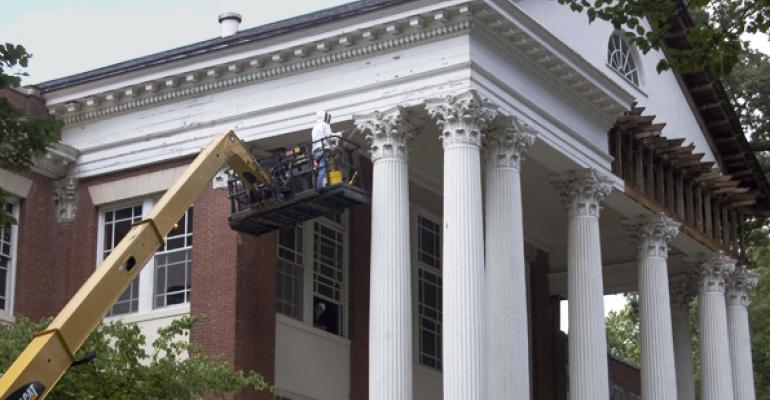Renovating historic buildings for re-use has never been easy. Everything about these projects, from acquiring properties to securing financing, can be more frustrating than putting up a new building. But, at a time when returns on other commercial properties are falling, historic rehabs are proving to be a healthy niche. There's strong demand for architecturally interesting urban spaces for retail, apartments and office. And, thanks to tax incentives, the returns can beat those of other commercial properties.
The National Park Service says the 1,202 proposed projects using historic tax credits are estimated at $3.27 billion for the year ending Sept. 30, 2002. Completed projects during fiscal year 2002 tallied $2.1 billion for 791 projects, up from $1.67 billion for 863 projects in fiscal year 2001. “The projects have been getting larger and the dollar amount has increased,” says John Leith-Tetrault, director of community partners at the National Trust for Historic Preservation in Washington, D.C. Thanks to more bank investors involved in historic rehabs, individual deals that use historic tax credits have grown from $10 million to $30 million.
From Los Angeles to Philadelphia, developers are turning old factories, office buildings and schools into retail, residential and office spaces. Art DeMuro, president of Venerable Properties in Portland, Ore., is a typical player. His business is thriving despite the economic downturn, which has been particularly painful in the Northwest. “Demand is strong, but redevelopment projects are not easy to undertake,” says DeMuro, whose firm is restoring Portland's Telegram Building, a four-story 1922 Georgian revival landmark that once housed the Portland Evening Telegram newspaper. The 33,333 sq. ft. building will open to new office tenants next May.
Few of these projects, however, would ever get off the ground without tax incentives. That's what made the $9.5 million Telegram project worthwhile. Without $2 million in Federal Historic Preservation Credits and New Market Tax Credits, tax credits given from the U.S. Treasury via non-profit entities like the National Trust, DeMuro says the Telegram renovation would not have been possible.
Historic tax credits allow owners to deduct 20% of rehabilitation costs from federal taxes for historic buildings, while any building built before 1936 automatically qualifies for a 10% break. The New Market Tax Credits take 39% off costs if at least 20% of a building includes retail.
Even with the credits, DeMuro has a net cost of $7.5 million and says he would need a return of 10%, or $750,000 annually to justify the project. Though he expects to reach that target, competition among developers in urban rehab has lowered returns. The competition, he says, “has bitten away at the premium that historic rehabilitation would normally get.”
John Tess, a principal at Heritage Consulting Group, which specializes in historic rehab, agrees that the economics are scrutinized. In the scramble for historic buildings, none are overlooked. He says, “The ones that were rehabbed in the '70s are now up for rehab again.”

